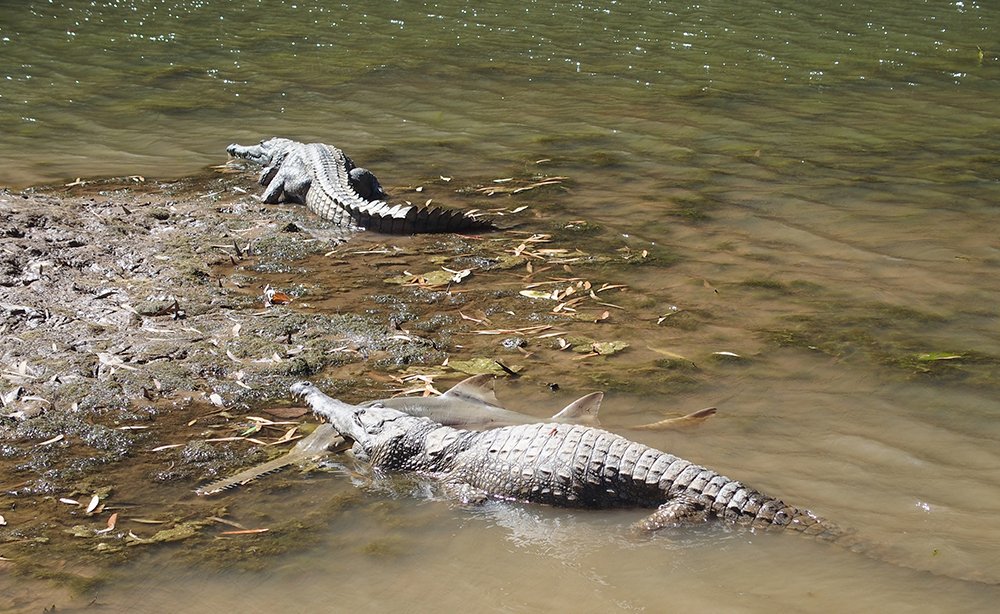Endangered sawfish battle crocodiles and sharks

Scientists were surprised to find that despite their sharp-toothed saw, young freshwater sawfish must still contend with bull sharks and crocodiles on their journey up the Fitzroy River, Western Australia.
The new findings from Murdoch University highlight yet another challenge in the plight of the critically endangered freshwater sawfish (Pristis pristis).
“For a fish that is around 80cm [when born] and with formidable weaponry, one would assume that rates of natural predation would be low,” said lead researcher Associate Professor David Morgan.
However, the researchers discovered that over 50 per cent of sawfish they caught had evidence of being attacked, which could be attributed to bull sharks (Carcharhinus leucas) and freshwater crocodiles (Crocodylus johnstoni).
“We can’t work out how many sawfish are eaten or killed, but we know from the scarring on surviving sawfish that a lot of them are attacked,” said David. Previous research by David’s team has identified that freshwater sawfish are an important food source for bull sharks, after analysing the muscle tissue and stomach contents of sharks in the area.

Image credit: supplied by David Woods/WA DPAW
Freshwater sawfish pups are born in estuaries, where the river meets the ocean. The young sawfish then have to navigate the “lower section of the river where the highest number of saltwater crocodiles and bull sharks are,” explained David. “Then they are into the upstream pools where all the freshwater crocodiles are, but if they have grown fast enough they can escape that predator window.”
After four to five years spent in upstream pools, the sawfish return to the estuary to breed, by which point they can measure up to 2.6m in length, large enough to be a top-order predator themselves.
After studying freshwater sawfish in the Kimberly for 17 years, the researchers and rangers know where to find them. To estimate shark and crocodile predation on sawfish, they caught individuals with lines or by hand and took photos of their scarring and bite marks, which were later identified based on records of crocodile skulls and bull shark jaws.
Shark and ray scientist Dr Colin Simpfendorfer from James Cook University (who was not involved in the research) said that while “we know that young sawfish are eaten by crocodiles and sharks, we have never known the extent of this predation[…] This study provides valuable understanding and the more information we have, the better we can manage the population.”
“Sawfishes are among the most threatened sharks and rays, and although they are doing better in Australia than anywhere else in the world, we still need to manage them carefully,” added Colin.
The research has been published in the May issue of the journal Ecology in the new series, The Scientific Naturalist.




